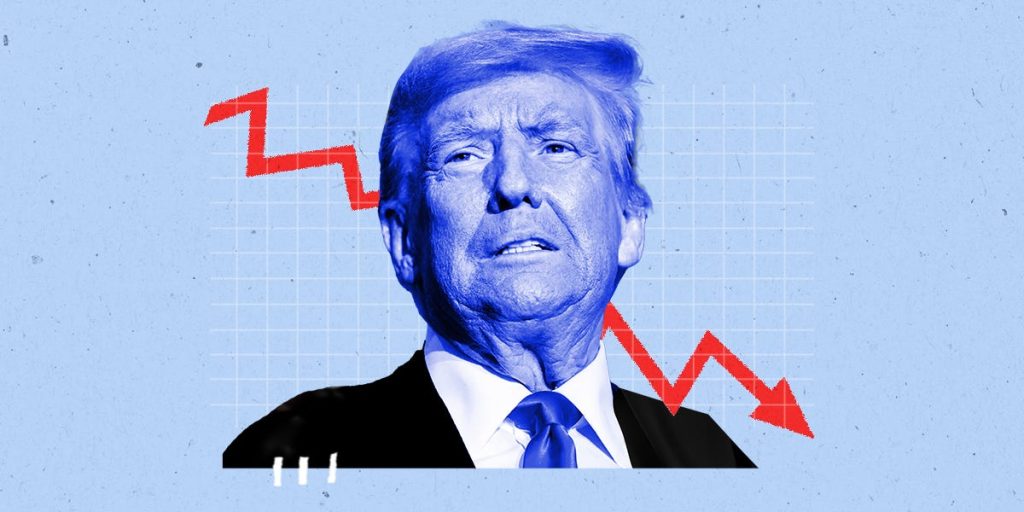Trump’s Tariff Plan: A Looming Headwind for the Stock Market
Donald Trump’s latest tariff plan has sparked concerns among investors and market analysts, with Goldman Sachs warning that the policy could lead to a significant downturn in the stock market. The Wall Street giant’s top stock strategist, David Kostin, highlighted that the tariffs imposed on the U.S.’s largest trading partners, including Mexico, Canada, and China, could result in a 5% drop in the S&P 500 index over the coming months. The tariffs, which range from 10% to 25%, are set to take full effect by Tuesday, and their impact on corporate earnings and stock valuations is expected to be substantial.
The Direct Impact on Corporate Earnings
Goldman Sachs estimates that every five percentage point increase in the effective U.S. tariff rate could reduce S&P 500 earnings by 1% to 2%. If companies decide to absorb the higher input costs to maintain sales volumes, profit margins could be squeezed. Conversely, if businesses pass these costs onto consumers, sales volumes may decline, further denting earnings. The bank warns that earnings per share for S&P 500 companies could drop by 2% to 3% due to the tariffs. This downward pressure on earnings could also lead to tighter financial conditions, exacerbating the negative impact on the stock market.
Uncertainty Surrounding Trump’s Economic Policies
The uncertainty surrounding Trump’s economic policies has already begun to weigh on investor sentiment. The U.S. Economic Policy Uncertainty Index spiked to 502, marking one of the highest levels in the past 40 years. This heightened uncertainty could lead to volatility in the stock market, as investors struggle to gauge the long-term implications of the tariffs. Kostin noted that the lack of clarity around Trump’s economic agenda could further diminish growth expectations and weigh on stock valuations.
Inflation and Interest Rate Concerns
Economists have also flagged the potential for Trump’s tariffs to stoke inflation, which could lead to higher interest rates and further pressure on the stock market. While tariffs imposed during Trump’s first term did not result in significant inflationary pressures, the current plan is far more comprehensive, raising concerns about its impact on prices. Goldman analysts predict that inflationary pressures from the tariffs could lead to a short-term rise in bond yields, reflecting higher interest rate expectations. However, they caution that sluggish growth prospects will likely prevent yields from increasing significantly over the long term.
Investor Reactions and Market Outlook
Investors have been bracing for potential stock market corrections since the start of the year, amid volatile trading conditions and shifting outlooks for growth and inflation. Goldman Sachs has predicted that the S&P 500 could end 2024 at around 6,500, implying a 7% upside from current levels. However, the implementation of Trump’s tariffs could derail this optimism, leading to a near-term correction of roughly 5% in the S&P 500’s fair value. If investors perceive the tariffs as a sign of further escalation in trade tensions, the market could see even sharper declines.
Conclusion: A Cautionary Note for Investors
In summary, Trump’s tariff plan poses significant risks to the stock market, with Goldman Sachs warning of a 5% drop in the S&P 500 in the near term. The tariffs could lead to lower corporate earnings, tighter financial conditions, and heightened economic uncertainty, all of which could weigh on stock valuations. While the bank remains cautiously optimistic about the market’s long-term prospects, the short-term outlook appears increasingly challenging. Investors would do well to remain vigilant, as the uncertain trajectory of Trump’s trade policies continues to shape market sentiment.







